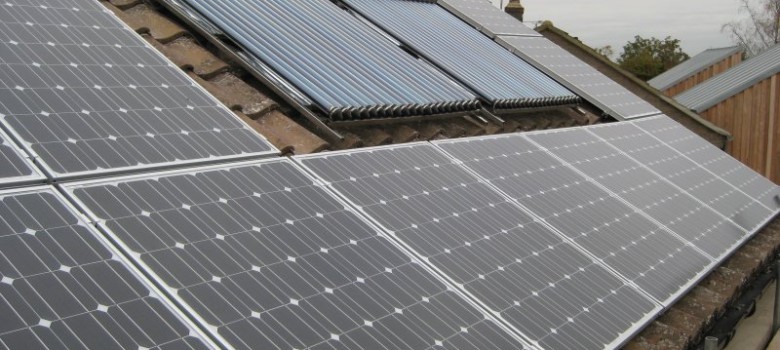
UPDATE: As of 30 March 2016, the government has stopped funding and the Green Deal Home Improvement Fund is closed to new applications. You can read about it here.
I sat down with Bernard Hughes last week, the Communications Director from the Green Deal Finance Company and it was very interesting to hear him talk about the Green Deal and how it is all going.
Getting Solar PV using Green Deal Finance
One point that came out of it was the success of installing solar PV via the Green Deal. He said that many of the plans written to date were for solar PV specifically and actually when you think about it, it is easy to see why. In this blog I am going to show you why getting solar PV via this route is such a good idea for some people.
So solar PV costs about £1,650 per KW of panels installed. This means for a 3.5KW system you are looking at about £7,000 once you take into account VAT – this would consist of 14 panels (each solar PV panel is 250w normally) and would produce about 2,800 kWh of electricity per year.
Now the Green Deal allows you to get finance on the energy savings that a measure creates. From the Green Deal report (and we have run this on various reports across London – the numbers may change up north!) we have calculated that you will be able to get 12.8p of finance for each kWh of electricity you produce since this can be used in the house, saving you having to buy it from the grid.
What this means is that for a 3.5KW (3500 watts) system, you are looking at getting roughly £9,000 finance in total. Now the down side is that £9,000 includes the interest you would need to pay on the Green Deal loan they give you. Over 25 years according to our calculations, it works out at about 60:40 interest to capital, so you would get £3,600 towards the install costs of the solar PV.
What is the best way to pay for solar PV?
So we now have three scenarios to work through
The first is paying for the solar PV out of your pocket – this means you would need to find the £7,000 for the system up front. On an average system like this, it works out that you are going to get an annual return of £800 so the payback of the system would be under 10 years and this doesn’t take into account the rising cost of energy, so it is likely the payback would be slightly quicker than this.
>>> You can see how we worked out the £800 annual return by clicking here <<<
The second scenario involves getting Green Deal finance to help cover the cost of the solar PV panels. This reduces your upfront cost down to £3,400 (£7,000 less the finance of £3,600). You obviously pay this back via the energy savings produced from generating the electricity (the basis of how Green Deal finance works). This does not stop you receiving the generation tariff for any electricity you produce (@14.38p / kWh) and also the export tariff for any electricity you export back to the grid (@ 4.77p/kWh), which equates to a return of approximately £400 per year. You could then use some of these tariff payments to help pay off the loan more quickly, reducing the overall amount of interest needing to be paid. Remember the Green Deal does not charge for overpayments.
In reality, you get paid as if you have exported exactly half of what you generate via your solar PV since very few people have export meters installed – we explain this in far more detail if you click on the link below
>>> The export kicker – paid even if you don’t export electricity <<<
If you can install a solar PV optimiser, it is worth doing. This ensures you don’t export any electricity back to the grid (but still get paid as if you are exporting 50%)
The nice thing about the Green Deal finance option is that if you were to leave the property 4 years down the line, you have only paid 4 years worth of payments on the system – the new homeowners would take on the payments, but they would also receive the feed in tariff payments and benefit from the savings on their electricity bills for the units they use in-house.
The final scenario is the rent-a-roof scheme, that was big a couple of years ago. Fewer companies offer this now, but you can still find it if you do want to go this route. Basically, the installer company will use your roof to mount the panels– you get the free electricity, but they get all the feed-in tariffs which covers the cost of the installation. There are two advantages of this – firstly there is zero up front cost for the system, the second is that since it is in the best interests of the installer company to keep the panels operational (because they get payments based on the amount of electricity produced) – which means if there are any issues, they will be over in a flash to fix them!
Solar PV and the Green Deal – Our view!
So what Green Deal finance has done is given people a nice middle ground – for those that can’t find £7,000, they can get the panels installed for lower up-front cost. If this person is not going to be in the house for 20 years (and therefore benefit from the feed-in tariff for this length of time) then this is definitely worth considering since they only pay for the system as long as they are paying for the bills – the new homeowner will pay for the rest of the system.
Speaking to Bernard, he quite correctly pointed out that moving from a ‘free’ system, where energy saving products like insulation and solar PV (to some extent) were readily installed by companies at no cost to the customer (essentially these were grants) to a pay-as-you-save model (i.e. you get finance on the energy savings that the measures create) was always going to be a tougher sell at first, but the number of plans beginning to go through the system shows people are starting to come round to the idea. So while the Green Deal isn’t perfect, hopefully this blog has shown you that it can indeed work if you do it right.


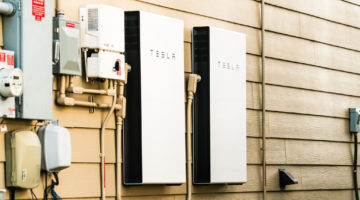
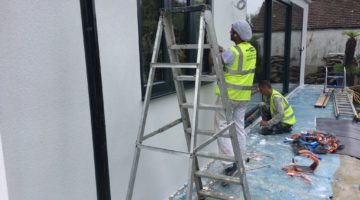
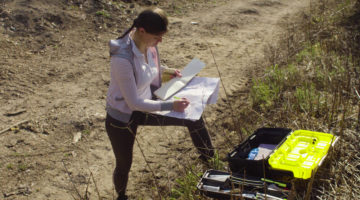
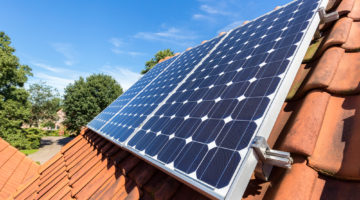





No Comments yet! Be the first one.